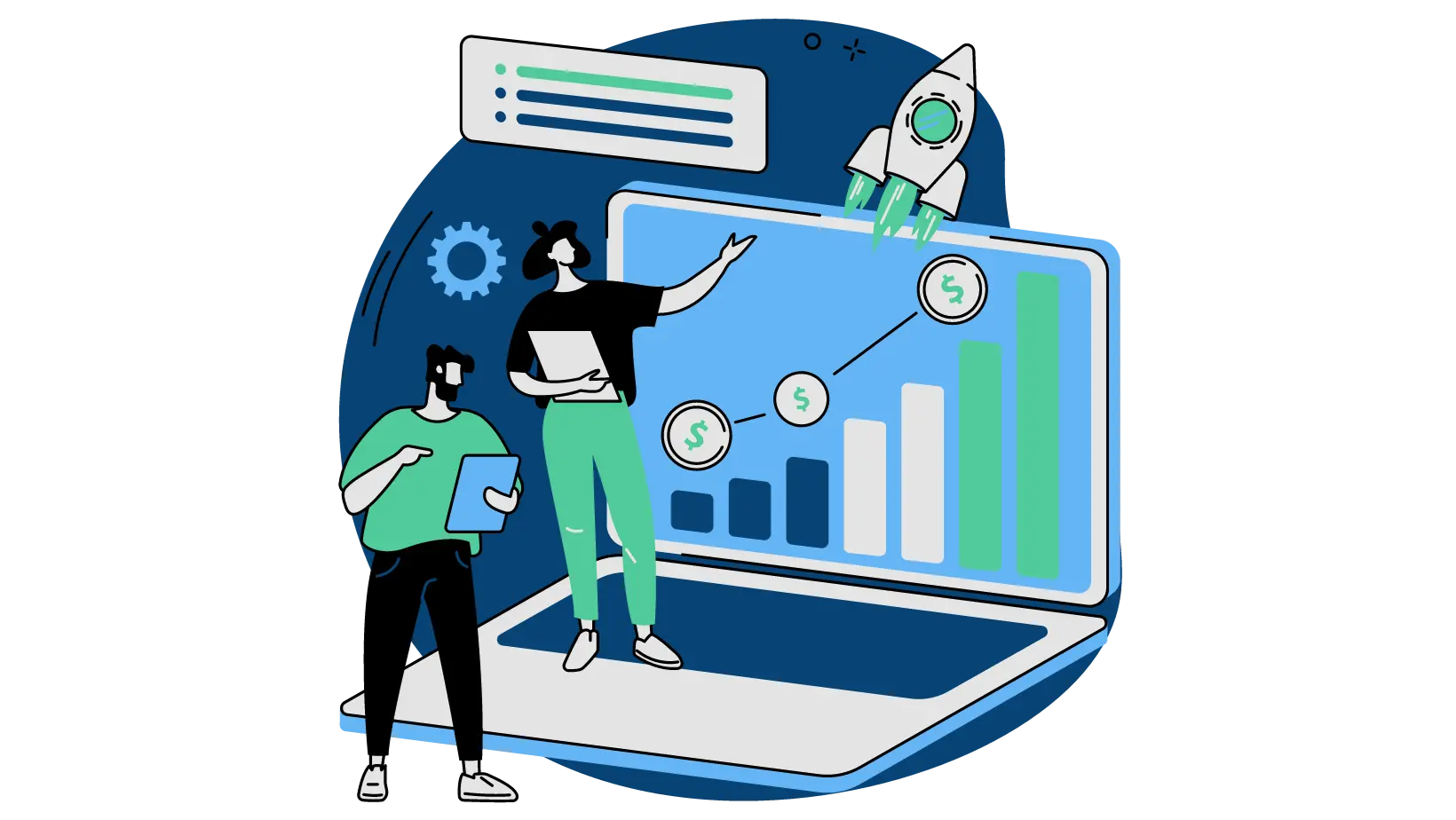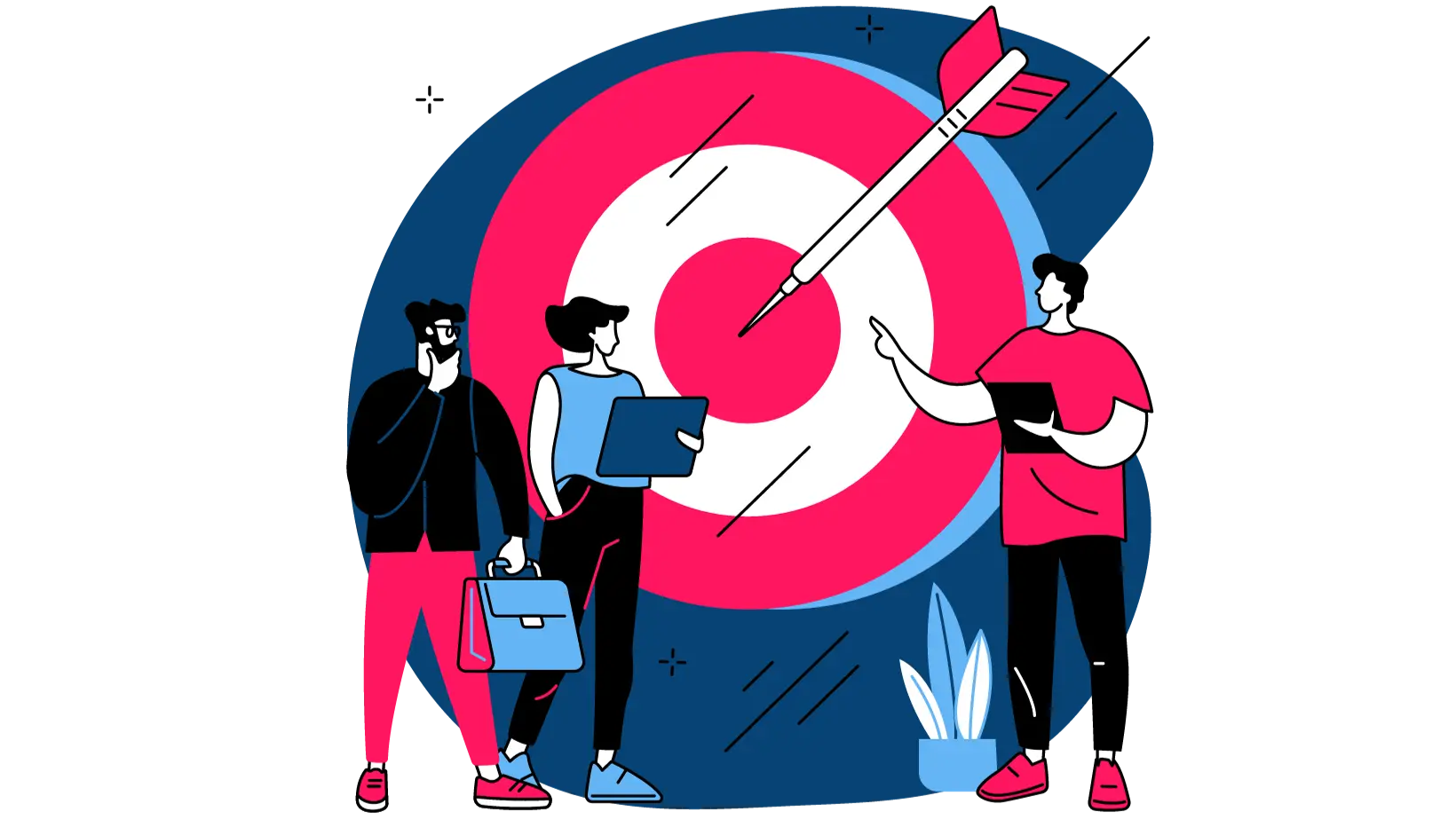- Double Down on Conversion Funnels That Work
- Unlocking User Engagement through Referral Campaigns
- Taking it a Step Further with Milestone Level Campaigns
- Employing Surveys and Personal Interaction to Foster Deeper Engagement
- Getting to Yes 10X: The Art of Selling and Validation
- Ready to Validate Your Startup?
By now I hope this guide on startup validation has started generating results. You’ve refined your pitch, narrowed your audience, started testing marketing channels, and have built a small email list you can work from.
Now we’re going to go over how to scale that effort up, learn more about the audience you’ve built, and start making your first sales as true proof.
Double Down on Conversion Funnels That Work
If you’ve made it this far it’s time to start scaling your marketing efforts. Look at the channels that are working for you and start laser-focusing on their optimization.
For example: If Facebook ads are drawing you leads, it’s time to maximize that opportunity. Discard campaigns that don’t yield results and redirect your resources into amplifying ones that work. Take ads that are working and create more like them. Work daily to beat your previous ad results.
This focused approach helps in scaling your reach and funnels captivating leads to the landing pages you’ve crafted.
Unlocking User Engagement through Referral Campaigns
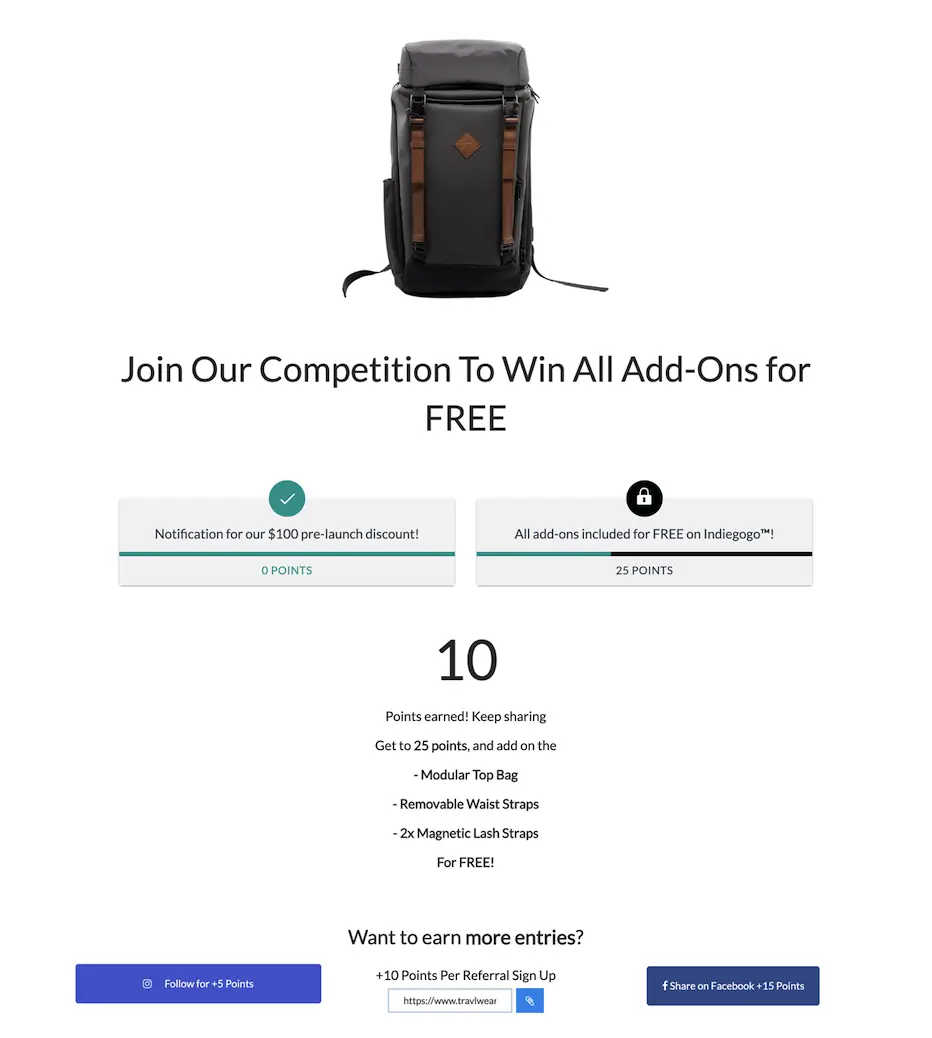
If the process of capturing an email address is a mountain climb, persuading them to whip out their credit card is scaling Mount Everest. But getting them to engage with your brand organically… now, that’s half the battle won.
Remember the excitement of a game where one can move positions by getting others to join up? Imagine incorporating this intrigue into your validation campaign. Activation of a referral program that offers rewards such as discounts or early access injects a vibrant, pro-active element into your campaign.
It’s not just about depositing an email address into a list anymore; it’s a race to the top of line, achieved through varied engagements like referring friends, following on social media, watching promotional videos, or any mechanism designed to increase post-signup action.
Now, what’s a good benchmark for these activities? Well, if 30 to 40% of the people signing up participate in ancillary actions, you know you’ve struck gold. This engagement rate paints a pretty picture of audiences keen to understand your idea and get involved beyond merely signing up.
Taking it a Step Further with Milestone Level Campaigns
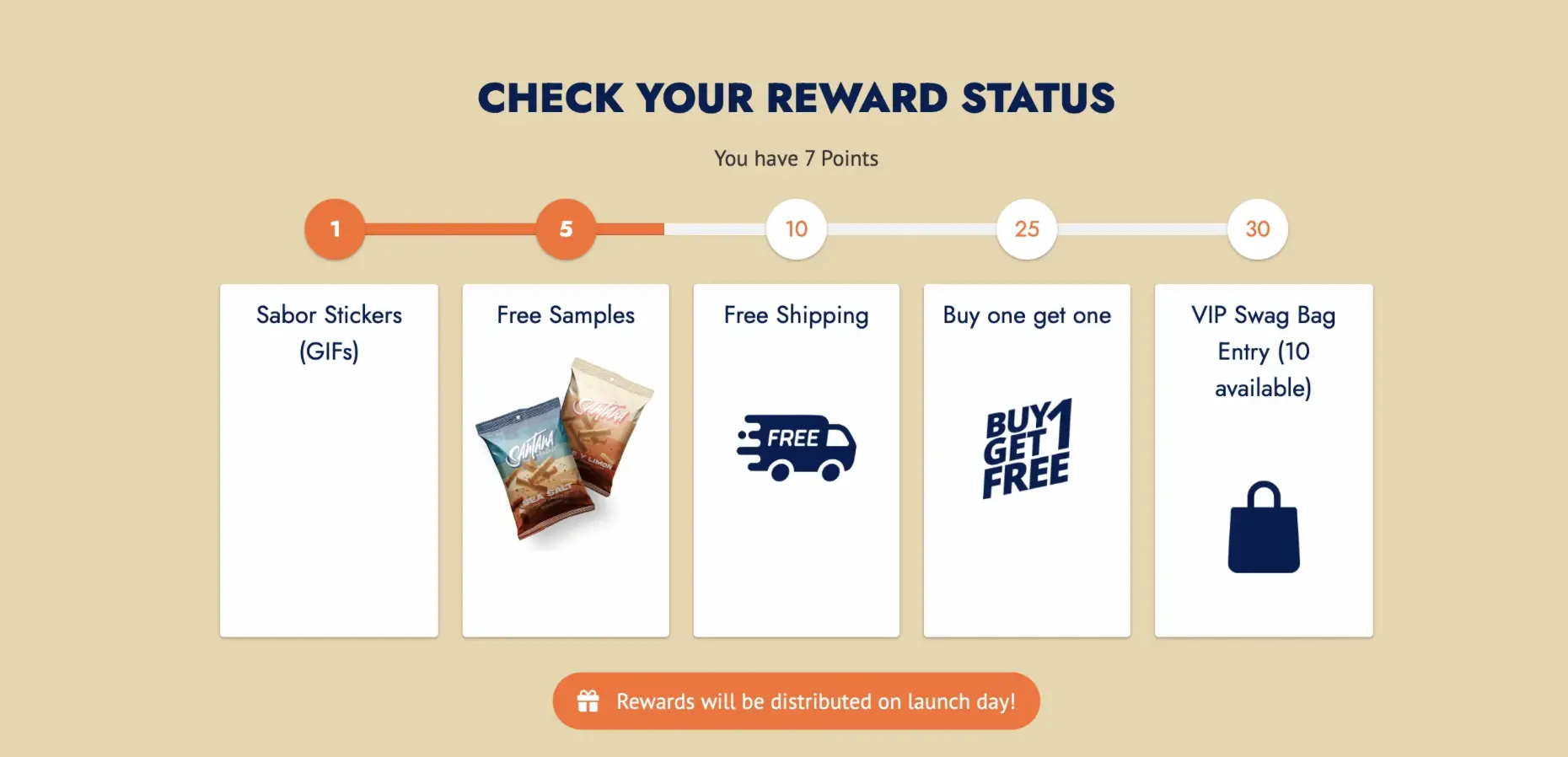
As a pioneer in powerful campaigns, KickoffLabs introduces the concept of Milestone level campaigns. Once someone signs up, you can go a step further and spur them into action with fun initiatives. A referral scheme that doles out free shipping, discounts, or some interesting merchandise builds another layer of buzz into your waitlist, all the while ensuring participation.
Proven Reward Ideas KickoffLabs Customers Have Used to Generate Buzz
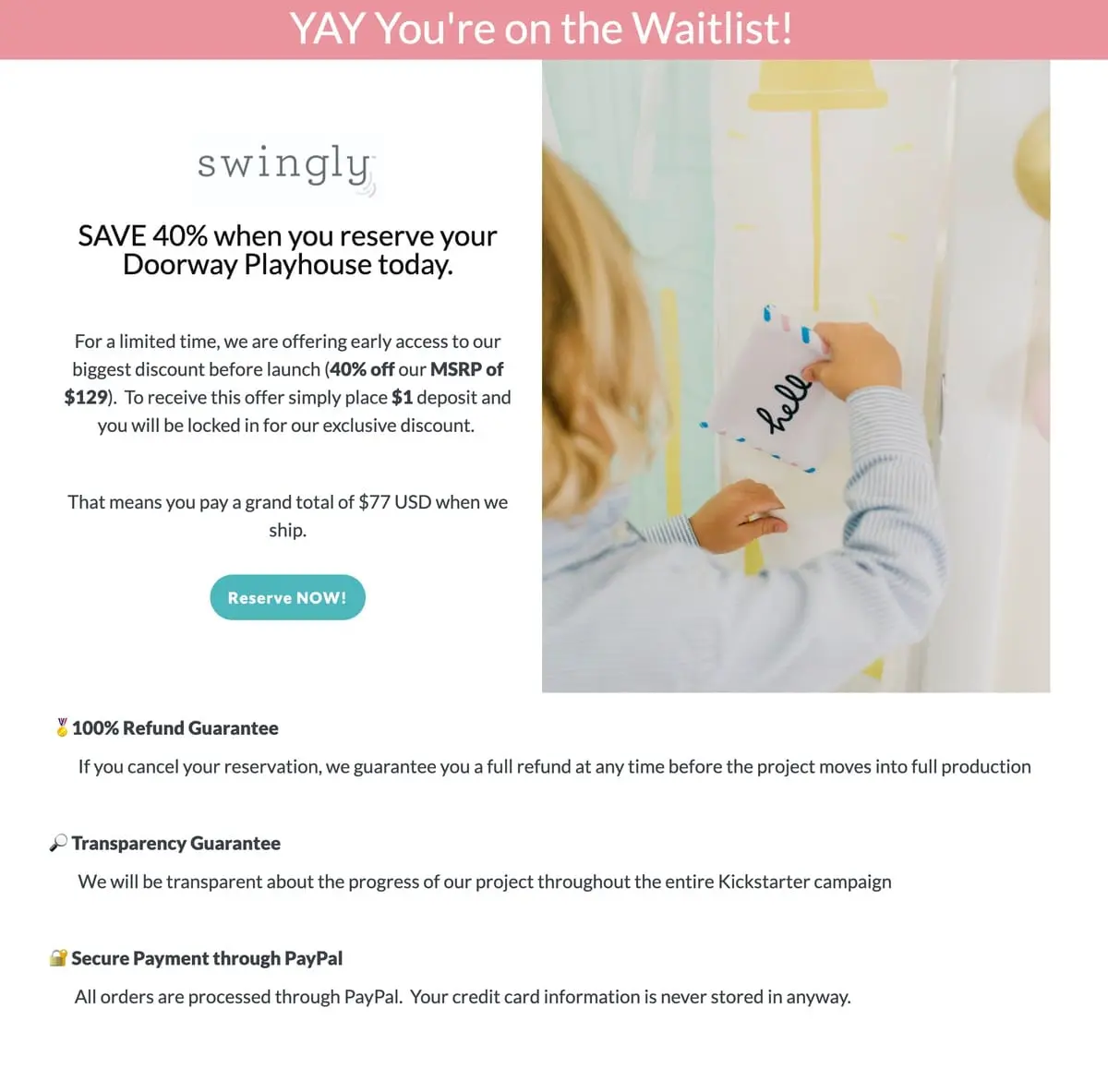
-
Ebooks and Courses: These digital rewards are relatively cheap to produce and distribute. They provide value to the recipient by offering knowledge and skills. However, bear in mind, the topic of the ebook or course should be relevant to your target audience.
-
Early Access Privileges: This can be a powerful incentive for customers who are genuinely interested in your product or service. They get the benefit of using your product before it hits the market, and you get valuable feedback to make improvements.
-
Product or Service Discounts: Even small discounts can be a strong incentive for people to join a waitlist. It gives the impression of exclusivity and makes them feel special. Ensure that discounts are substantial enough to make people act but not so big that you suffer a loss.
-
Webinar or Event Invitations: Webinars are valuable because they offer the opportunity to learn from experts. Offering exclusive access to your webinars can make your waitlist attractive to those who find value in knowledge and learning.
-
Free Trials: A risk-free way to try your product or service can make the wait worth it. This can be particularly effective for subscription services or other recurring revenue businesses.
-
Special Edition or Upgraded Product: Offering a special edition of your product or free upgrades can be an exciting incentive. This could include features, designs, or customization options not available to the general public.
-
Merchandise: Branded t-shirts, stickers, caps, notebooks, etc., can be a cost-effective reward. These items provide marketing exposure each time they’re used and can help build a community around your brand.
-
Loyalty Points: If you have a rewards program, offer bonus loyalty points to those joining the waitlist. These points can later be redeemed for products, discounts, or special rewards, providing long-term appeal.
-
Content Behind a Paywall: If you produce content that is typically hidden behind a paywall, offering some of that for free as a reward can entice people to join your waitlist. It’s a win-win situation where they get a taste of premium content, and you get to showcase your offerings.
-
Referral Rewards: Encourage sharing by offering rewards to people who refer friends or colleagues who also end up joining the waitlist. This strategy leverages the power of word-of-mouth marketing and can significantly expand your potential customer base.
-
Physical Products: If appropriate and budget allows, offering a physical product as a reward can have a big impact. Whether it’s a sample of your product or a complimentary add-on, tangible rewards can feel more significant to the recipient.
-
Exclusive Content: Offering unique content that won’t be available anywhere else is a compelling incentive. This could be insights from thought leaders within your company, sneak peeks at upcoming products, or bonus features not available to the general public.
-
Personalized Thank-You Messages: A simple way to make customers feel valued is by sending them personalized thank-you messages. Stand out from other businesses by taking the time to acknowledge each person who joins your waitlist.
-
VIP Community Access: Having exclusive access to a community or forum can be a powerful motivator. People like feeling special and being part of an exclusive group, so this can be a very appealing reward.
-
Contests and Giveaways: Running a contest or giveaway exclusively for waitlist signups can create excitement and encourage more people to join. The prizes don’t have to be expensive, but they should be desirable and relevant to your audience.
Employing Surveys and Personal Interaction to Foster Deeper Engagement

Once conversions are rolling, consider encouraging survey completion as an action step so you can learn more about the audience you are building in real time. This also helps you ensure you are collecting the right people. Nothing worse that getting 10,000 email addresses that have no interest in making a purchase.
An even more proactive approach is to encourage those who’ve signed up to book an appointment with you. Not for hard selling, but to understand their obstacles better and how your product can assist. Yes, you’ve done your homework in the validation process, but capitalize on this opportunity to solidly ground your undertakings.
Pre-launch Questions to Ask

-
Identify Personal Demographics: Assess who your respondents are. Knowing their age, gender, location, and occupation can help you make informed decisions about how you approach your product development and marketing strategy.
-
Unearth Buyer Interests: Dive deep into understanding what your potential customers are interested in. This may include their hobbies, purchase frequency, what products they usually buy, and why.
-
Explore Past Experiences: What challenges have your potential buyers faced with past products? This will give you a clearer idea about what pitfalls or gaps in the market your product could address.
-
Analyze spending Habits: Understanding how much your potential customers are willing to spend and how often, can give you a realistic trajectory for your product’s revenue.
-
Evaluate Product Usefulness: Ask respondents to rate how useful they find your product or service. It may help you understand whether the potential demand matches your expectations and if not, how it can be improved.
-
Pinpoint Competitive Advantage: Have potential buyers compare your product with others available in the market. This will give you insights not only about your potential competition but also about your unique selling proposition.
-
Seek Specific Feedback: Ask open-ended questions that encourage detailed responses. This will help uncover unique insights that can further streamline your product development process.
-
Determine Purchase Probability: Inquire about the likelihood of the respondent purchasing your product. This can give you a clear indicator of your product’s potential market success.
Getting to Yes 10X: The Art of Selling and Validation
Here’s where the rubber meets the road. You’ve engaged potential customers, but can you sell your product to them? Preemptively closing deals helps gauge whether your product is needed, affordable, and saleable. Aim to get affirmative buy-in from five to ten people before commencing product development. These ‘yes’ commitments not just validate your concept, but they also infuse confidence in your journey.
Tips for Getting to “yes”
-
Set Clear Goals: Before your call, outline what you want to achieve - are you seeking a commitment, gathering data, or promoting a new product? Having a defined aim helps both parties stay on track and encourages productive communication.
-
Research Your Prospect: Spend time understanding your potential customer’s needs, pain points, and preferences. Tailoring your pitch to address their specific situation can increase the chances of receiving a positive response.
-
Communicate Value: Focus on the unique value proposition of your product. Remember, it’s not about the features, but how your product can solve the prospect’s problems or improve their circumstances.
-
Use Authenticity: Authenticity creates trust, and trust nurtures commitment. Be honest in your pitching and avoid overpromising on your product’s capabilities.
-
Actively Listen: Instead of constantly pitching, listen to your prospects. Encourage them to share their thoughts and concerns. This feedback can be invaluable for refining your product or approach.
-
Counter Objections: You’ll face objections—it’s part of the process. Be ready to counter sensibly and constructively, showing empathy towards the concerns of your prospect.
-
Offer Exclusivity: A sense of exclusivity can be a strong motivator. Consider offering early access, proprietary features, or special discounts to early adopters.
-
Conduct Follow-ups: Consistent follow-ups demonstrate your interest and commitment to your prospects and can be the key to securing a commitment.
Ready to Validate Your Startup?
Now that you’ve refined your approach, it’s time to scale up with campaigns designed for conversions:
- Pre-launch Waitlist - Drive signups and pre-sales with a simple, high-converting waitlist
- Email Opt-in Campaign - Collect leads with valuable content and incentives
- Launch Giveaway - Maximize engagement with milestone rewards and referral bonuses
Essential tools for driving conversions:
- Landing Page Builder - Create high-converting pages optimized for pre-sales
- Analytics & Reports - Track conversion funnels, engagement rates, and referral performance
- Email Marketing - Nurture leads with automated sequences and surveys
- Referral Tracking - Identify your top advocates and reward them for spreading the word
It’s time to start closing deals as we head into the launch phase!
Read more Startup Validation with the next chapter:
11. Going for Launch
Learn how to launch your startup after you've validated your idea.
